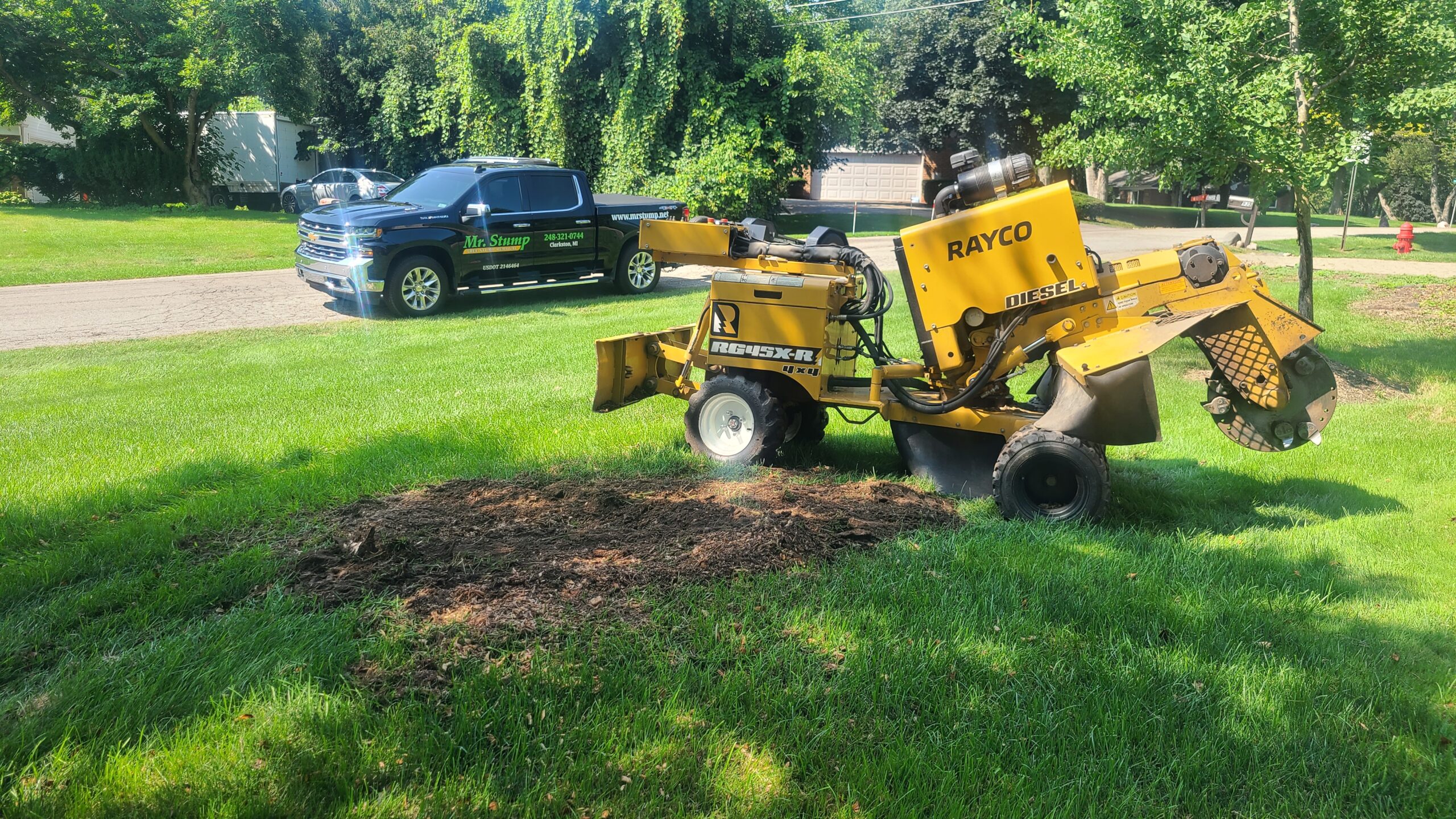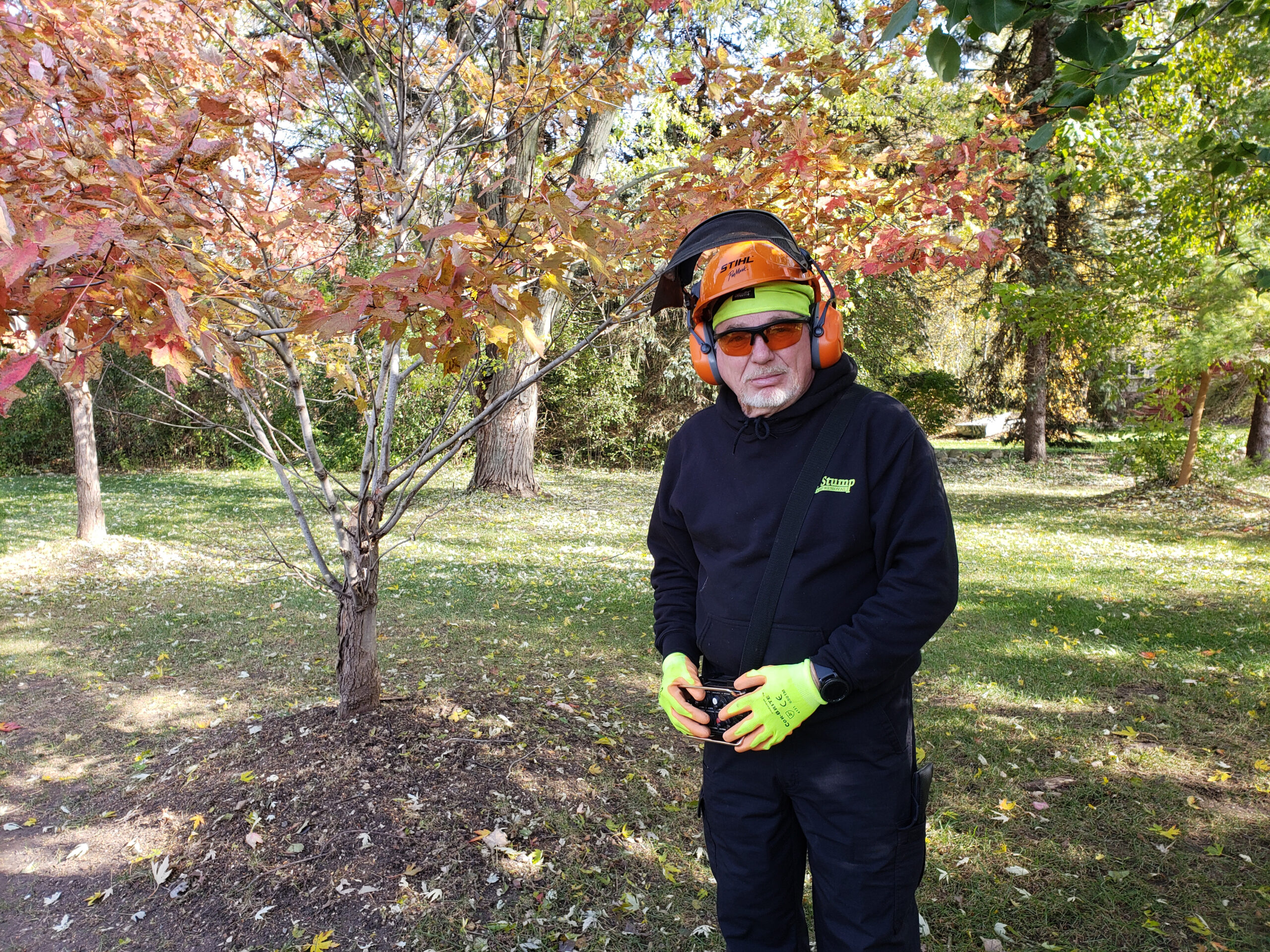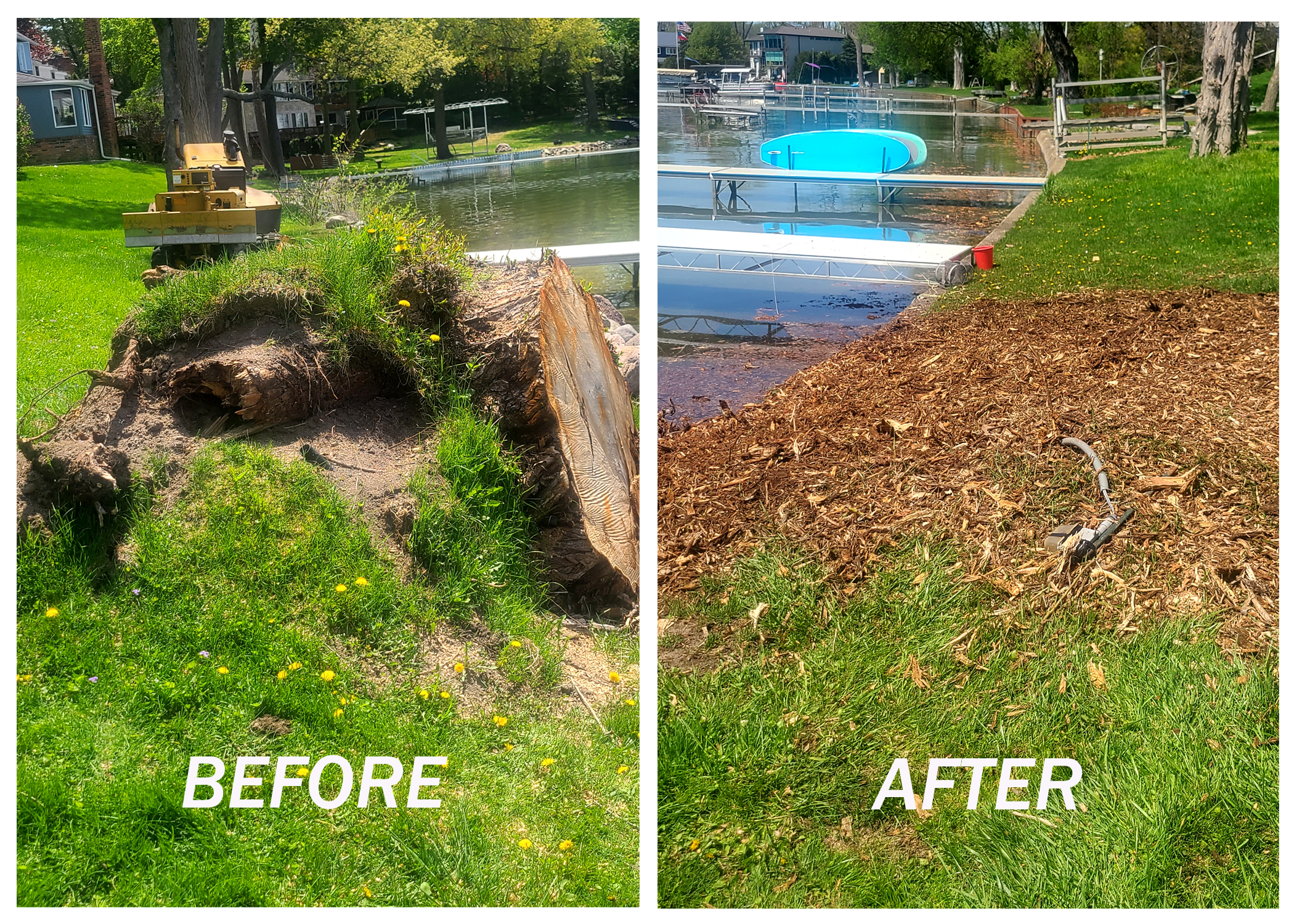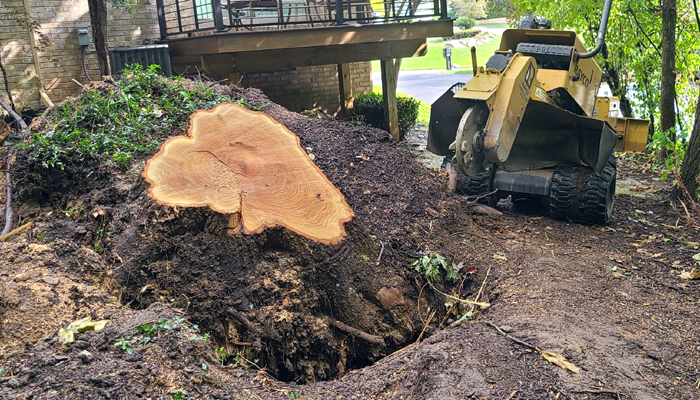Michigan Stump Grinding
Tree Stump Removal Services
Michigan Stump Grinding
Tree Stump Removal Services
Stump Grinding Servicing Oakland County
Michigan Stump Grinding is your go-to solution for professional and affordable stump grinding services. Our dedicated team of experts is here to provide top-notch stump removal services, ensuring your property is free from obstacles, safe, and visually appealing.
About Us
At Michigan Stump Grinding (sister company of Mr. Stump), we take pride in being one of the leading stump grinding companies in the state. With years of experience and a commitment to excellence, we have earned a reputation for delivering reliable and efficient stump grinding services. Our focus is on meeting and exceeding your expectations while offering competitive prices.


Commercial or Residential
Why Choose Us?
1. Expert Stump Grinding Service
We specialize in stump grinding. We use state-of-the-art equipment to ensure that even the most challenging stumps are efficiently removed. No stump is too big or too small!
2. Affordable Stump Grinding
We understand that budget constraints can be a concern. That’s why we offer affordable stump grinding services without compromising on quality. We believe that everyone should have access to expert stump removal without breaking the bank.
3. Local Stump Grinder Company Near You
When you need stump removal, you want a local company you can trust. Michigan Stump Grinding is conveniently located, making it easy for us to reach your property promptly. Say goodbye to those inconvenient delays with out-of-town companies.
Commercial or Residential
Our Stump Grinding Process
Our stump grinding process is designed to be hassle-free for our clients. Here’s what you can expect when you choose Michigan Stump Grinding:
- Free Estimate: Contact us, and we’ll provide you with a free, no-obligation estimate for your stump grinding needs.
- Scheduling: We work around your schedule, ensuring minimal disruption to your daily routine.
- Stump Grinding: Our experienced team arrives on time and uses top-of-the-line stump grinding equipment to remove the stumps efficiently and safely.
- Cleanup: Your yard will be restored to it’s original condition (or as close as possible). Mr. Stump takes great pride in our post-project clean up – just read some of our reviews! There will be no gopher holes, debris, or remnants. I’ve been told by several tree companies that I have raised the bar really high with my clean up and that’s something that should not be overlooked because the last thing you need is a lot of work on your part to get your yard back in shape.
Service Areas
Michigan Stump Grinding proudly serves various regions across the state, including but not limited to:
Tree Stump grinding and removal services in Bloomfield Hills Michigan – Bloomfield Twp
Tree Stump Grinding and Removal Services in Commerce Michigan
Tree Stump Grinding and Removal Services in White Lake Michigan
Tree stump Grinding and Removal Services in Highland Michigan
Tree Stump Grinding and Removal Services in Milford Michigan
Tree Stump Grinding and Removal Services in Auburn Hills Michigan
Tree Stump Grinding and Removal Services in Ferndale
Tree Stump Grinding and Removal Services in Royal Oak
Tree Stump Grinding and Removal Services in Birmingham
Tree Stump Grinding and Removal Services in Clarkston
Tree Stump Grinding and Removal Services in Davisburg
Tree Stump Grinding and Removal Services in Fenton
Tree Stump Grinding and Removal Services in Grand Blanc
Tree Stump Grinding and Removal Services in Holly
Tree Stump Grinding and Removal Services in Oxford
Tree Stump Grinding and Removal Services in Rochester / Rochester Hills
No matter where you’re located in Michigan, we’re just a call away!


“
“
Contact Us Today!
Are you ready to reclaim your yard and enhance the safety and aesthetics of your property? Contact Michigan Stump Grinding today for all your stump grinding needs. Whether you need a one-time service or regular maintenance, we’ve got you covered. Don’t wait any longer; get in touch with us for a free estimate and experience the difference of working with a trusted, local stump grinding company near you.
When it comes to Michigan stump grinding, Michigan Stump Grinding is the name you can rely on. We look forward to serving you and helping you achieve a stump-free environment.
“
C&C Stump Grinding was founded to help with quality and honest pricing in the stump grinding industry. Our commitment is customer satisfaction. We have removed thousands of stumps & we’ve left every customer happy!
Message Us
Get In touch below. Ask Any Question or Start a Free Quote
Call Us
Servicing
Oakland County, Michigan
Open Hours
M-F: 8am – 9pm, S-S, 8am – 9pm

